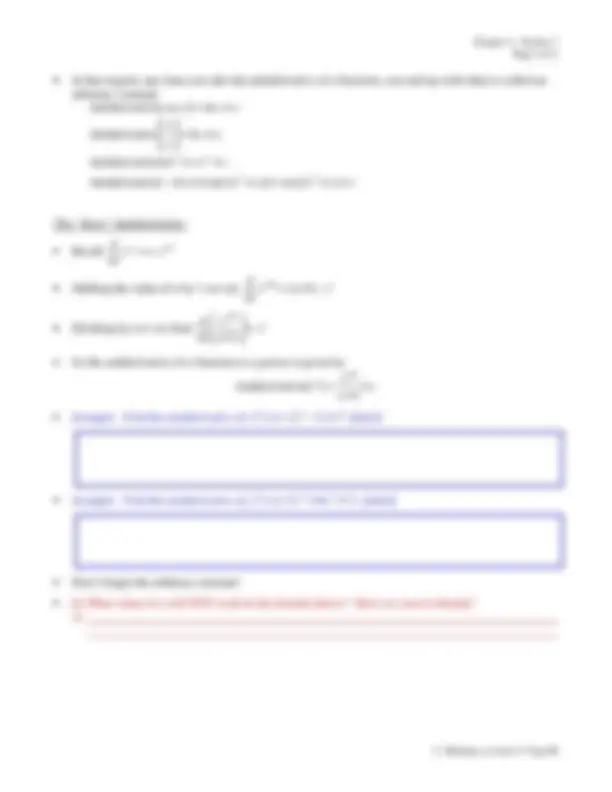



Study with the several resources on Docsity

Earn points by helping other students or get them with a premium plan


Prepare for your exams
Study with the several resources on Docsity

Earn points to download
Earn points by helping other students or get them with a premium plan
Community
Ask the community for help and clear up your study doubts
Discover the best universities in your country according to Docsity users
Free resources
Download our free guides on studying techniques, anxiety management strategies, and thesis advice from Docsity tutors
The concept of antiderivatives and the arbitrary constant that arises when finding the antiderivative of a function. The document also provides examples of finding antiderivatives of functions with different exponents.
Typology: Study notes
1 / 2

This page cannot be seen from the preview
Don't miss anything!


Chapter 4. Section 7 Page 1 of 2
C. Bellomo, revised 17-Sep-
A Recap of Some Derivatives:
4 4
2 2
sin cos
ln
cos(2 ) (4 1) sin(2 )
x x
d x x dx
d x dx x
d e e dx
d x x x x x dx
4 4
2 2
Antiderivative[ cos ] sin
Antiderivative ln
Antiderivative[4 ]
Antiderivative[ (4 1) sin(2 )] cos(2 )
x x
x x
x x
e e
x x x x x
relationship between them.
The Arbitrary Constant:
4 4
4 4
(sin 17) cos
(sin 15) cos
(12 ln )
( ln )
x x
x x
d x x dx
d x x dx
d x dx x
d e x dx x
d e e dx
d e e dx
derivative (or shape) of that function.
Chapter 4. Section 7 Page 2 of 2
C. Bellomo, revised 17-Sep-
arbitrary constant:
4 4
2 2
Antiderivative[ cos ] sin
Antiderivative ln
Antiderivative[4 ]
Antiderivative[ (4 1) sin(2 )] cos(2 )
x x
x x c
x c x
e e c
x x x x x c
The “Easy” Antiderivative:
d n n 1 x n x dx
− = ⋅
1 ( 1)
d n n x n x dx
= + ⋅
1
n d x (^) n x dx n
⎛ ⎞ ⎜ ⎟= ⎝ + ⎠
1 Antiderivative[ ] = 1
n n x x c n
2 f ′( )^ x = 2 x − 3 x+ 7 (find f)
3 2 f ( )x 5 x 8 x 7 x
= + + (find f)
A: